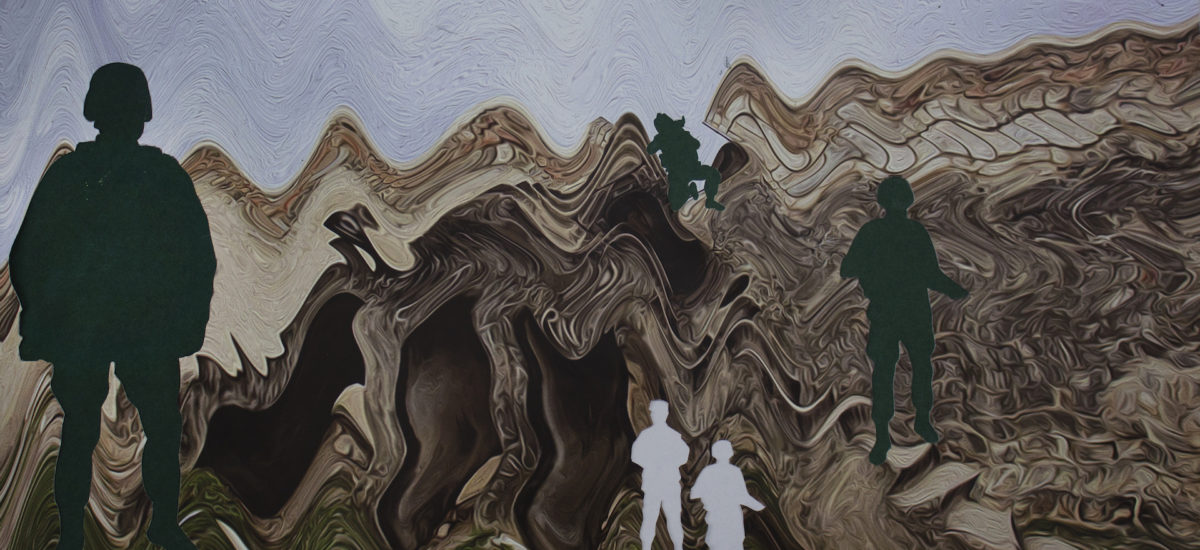Photo courtesy of Saskia Fernando Gallery
For most of his life, 35 year old artist Kanesh Thabendran has lived in a war zone where every day was a struggle for survival amid exploding bombs and falling artillery shells. He watched as his neighbours and friends lost their relatives, their homes and their possessions. These losses are reflected in his work in the form of cut outs that appear in his collages and paintings.
“As an artist I collect and make photographs and photo cutting collages. Through that I create my own visual language. By questioning the relationship between memory and experience, I employ remembrance in my daily practice. My works are an act of social reflection in which the subconscious plays an important role,” he says.
“My works talk about the new reality and what is missing through the act of cutting out of photographs. This reality transferred me into another zone of conflict. Photo Cutting and collage is the hybrid language of urbanity. decontextualized and wholly built from fragments of daily life. This process allows me to transform and alter the original context of the images. it can symbolize the potential for change growth and metamorphosis in both individual and society as a whole.”
One photograph is of a before family photograph where there is a happy father, mother and two children. In the after photograph, the father’s figure is a blank cut out, one of the thousands of missing in Sri Lanka’s cruel war. “I met many people who have family members who have disappeared and I listen to their stories, which inspired me to make these collages,” says Kanesh. “I was also searching for what I had lost.”
“Personal stories and narratives are rich sources of evidence to understand not just what happened, but also how it happened. This would lead to a collective retelling of the history of the heard and unheard voices and lead to a better understanding of the past – initiating a conversation through art retold with a collective voice” he says.
Kanesh is a full time artist and also works as a freelance graphic designer in Jaffna. He has a degree in art and design from the University of Vietnam and has exhibited at Colomboscope and Colombo Biennale. After his degree Kanesh realised he wanted to be an artist. Once the war ended in 2009, Colombo based artists such as Chandraguptha Thenuwaraand Jagath Weerasinghe did teaching stints in Jaffna, inspiring and motivating the young Kanesh. In Colombo for his first solo exhibition in 2015, Kanesh met many artists, journalists and academics who have helped him on his creative journey.
His current exhibition, now on at the Saskia Fernando Gallery, is a collection where he uses digital manipulation, photo-cutting and collage techniques to alter photographs. Bullets, helmets, and tombstones appear in Kanesh’s work as a reminder of the many deaths and constant military presence. Images of places with historical and touristic interest are distorted as they become sites of traumatic memory.
Kanesh says the title of the exhibition, Unspoken, is reflection of the constraints he has when trying to take photographs in the highly militarised area of the country which is his home. “Many times we are told we cannot take photographs for security reasons but later they appear in the newspapers. I want to search for the truth behind these photographs and the unseen messages behind them.”
Other unspoken issues include mass grave sites, which are often covered by buildings or other structures that are built on top of them. “I want people to remember the truth and not to forget. They may prefer to forget to avoid further trauma but as an artist I am giving the message that it is important to remember,” he points out.

